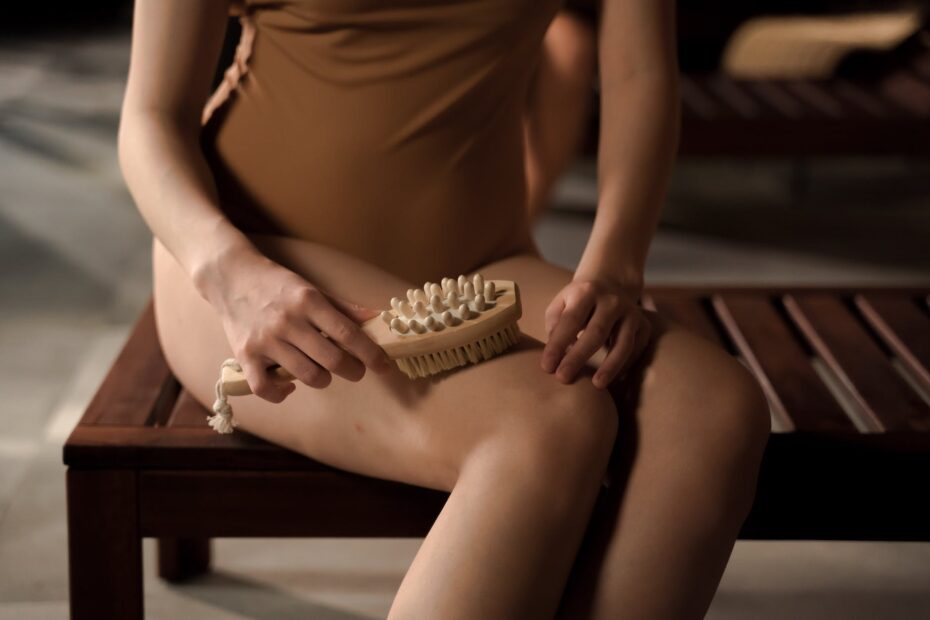Are you tired of dealing with the discomfort and pain of thigh chafing? Look no further! In this ultimate guide, we will provide you with comprehensive information on how to banish thigh chafing for good. Whether you’re an athlete, a busy mom, or someone who simply loves the outdoors, this guide is for you.
Thigh chafing, also known as chub rub, is a common problem that occurs when the skin on your inner thighs rubs against each other, causing irritation, redness, and sometimes even blisters. But fret not, because we have got you covered with effective solutions that will provide you with long-lasting relief.
Throughout this guide, we will delve into the causes, symptoms, and risk factors of thigh chafing, helping you understand the root of the problem. We will also share preventive measures that you can easily incorporate into your daily routine to avoid thigh chafing altogether. From choosing the right clothing to developing a skincare routine, we’ve got all the tips and tricks you need.
So, say goodbye to thigh chafing and hello to a more comfortable and enjoyable experience. Get ready to reclaim your freedom and confidence with our ultimate guide to banish thigh chafing for good!
Understanding Thigh Chafing
Understanding Thigh Chafing
Thigh chafing, also known as chub rub, is a common and uncomfortable condition that occurs when the skin on the inner thighs rubs against each other, causing friction and irritation. This can result in redness, soreness, and even painful blisters. It is most commonly experienced by individuals who have larger thighs or engage in activities that involve repetitive movements, such as walking or running.
The primary cause of thigh chafing is friction, which is exacerbated by factors such as heat, humidity, and sweat. When the skin becomes moist, it becomes more prone to chafing. Other risk factors include wearing tight or rough clothing, having sensitive skin, and being overweight.
Thigh chafing can have a significant impact on daily activities and overall well-being. The discomfort and pain associated with chafing can make it difficult to engage in physical activities or even walk comfortably. It can also affect one’s self-confidence and body image. Therefore, understanding the causes, symptoms, and risk factors of thigh chafing is crucial in finding effective solutions for prevention and treatment.
Preventive Measures to Avoid Thigh Chafing
Preventive Measures to Avoid Thigh Chafing
Thigh chafing can be a real pain, but don’t worry, there are plenty of preventive measures you can take to keep those thighs happy and chafe-free. Here are some practical tips and strategies to help you prevent thigh chafing:
- Proper Clothing Choices: Opt for loose-fitting clothes made from breathable fabrics like cotton or moisture-wicking materials. Avoid tight jeans or synthetic fabrics that can trap moisture and heat, leading to friction and chafing.
- Skincare Routines: Keep your skin well-moisturized and hydrated to reduce friction. Apply a thin layer of petroleum jelly or anti-chafing balms to areas prone to chafing before any physical activity.
- Lifestyle Modifications: If you’re prone to thigh chafing, consider losing some weight to reduce friction between your thighs. Engaging in regular exercise can also help strengthen your muscles and improve your overall health.
By following these preventive measures, you can significantly reduce the risk of thigh chafing and enjoy your daily activities without any discomfort. Remember, prevention is always better than cure!
Frequently Asked Questions
- What is thigh chafing?
Thigh chafing, also known as chub rub, is a common condition where the skin on the inner thighs rub against each other, causing irritation, redness, and discomfort.
- What are the main causes of thigh chafing?
Thigh chafing is primarily caused by friction between the thighs, especially during activities like walking, running, or exercising. Other contributing factors include excessive sweating, wearing tight clothing, and hot and humid weather conditions.
- How can I prevent thigh chafing?
To prevent thigh chafing, you can try wearing loose-fitting clothing, using anti-chafing creams or powders, applying a lubricant like petroleum jelly, or wearing thigh bands or shorts specifically designed to reduce friction.
- Are there any home remedies for thigh chafing?
Yes, there are several home remedies you can try to alleviate thigh chafing. Some options include applying aloe vera gel, coconut oil, or cornstarch to the affected area, taking cool baths, and keeping the skin clean and dry.
- When should I seek medical help for thigh chafing?
If your thigh chafing is severe, persists for a long time, shows signs of infection such as pus or extreme redness, or if you have underlying medical conditions that may worsen the chafing, it is advisable to consult a healthcare professional for proper diagnosis and treatment.
- Can overweight individuals be more prone to thigh chafing?
Yes, overweight individuals may be more prone to thigh chafing due to increased friction caused by skin folds or excess weight. However, thigh chafing can affect anyone, regardless of their body size or weight.
- Is thigh chafing a permanent condition?
No, thigh chafing is not a permanent condition. With proper preventive measures and treatment, such as keeping the affected area dry, using appropriate lubricants, and wearing suitable clothing, thigh chafing can be effectively managed and prevented in the long term.


Keith is originally from Truckton, Colorado. The 54-year-old cared for his overweight wife for many years. Keitch is also a freelance editor at antichafing.net and supports the team as a competent advisor. In his spare time Keith enjoys reading books, visiting his homeland and is a passionate product tester for well-known manufacturers.

